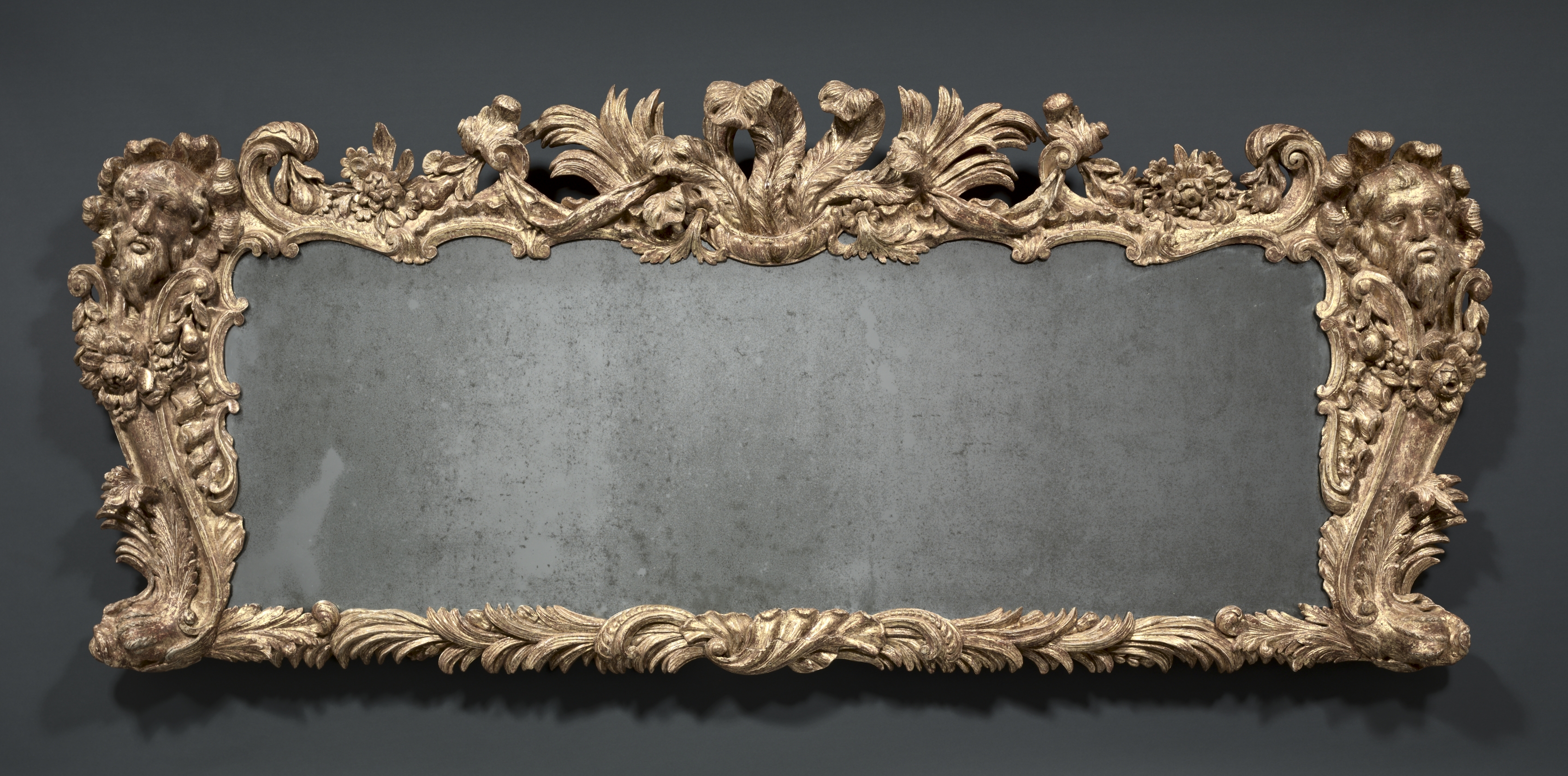The Cleveland Museum of Art
Collection Online as of April 24, 2024

Overmantel Mirror
c. 1740
(British, c. 1697–1746)
Overall: 78 x 186 cm (30 11/16 x 73 1/4 in.)
Did You Know?
In contrast to mirrors today, plate glass mirrors produced in Britain during the 1700s such as this one were backed with mercury and thin sheets of tin which give them their dark appearance.Description
The carved ostrich feathers along the top of this mirror are a likely reference to the emblem of Frederick, Prince of Wales (1707–1751), the eldest son of George II (reigned 1727–1760), who pitted himself against his father and even set up a rival court of advisors in London. He saw himself as much more sophisticated and worldly, and in the world of design, harbored a love of all things French and modern, whereas George II was staunchly conservative and favored earlier historicist styles. The subtle carved plumes carved into this mirror suggest the political leanings of the owner who must have favored the prince over the king, a bold statement that would have been evident to anyone at the time. As it turns out, the rivalry dissipated when Frederick died prematurely at the age of 44, leaving his own eldest son to succeed his grandfather as George III in 1760.- 2006The Cleveland Museum of Art, Cleveland, OH
- Droth, Martina, and Penelope Curtis. Taking Shape: Finding Sculpture in the Decorative Arts: An Exhibition Co-Organised by the Henry Moore Institute, Leeds and the J. Paul Getty Museum, Los Angeles, California. Leeds: Henry Moore Institute, 2009. Mentioned & reproduced: p. 96, fig. 5 library.clevelandart.org
- British Gallery Reinstallation (June 2020). The Cleveland Museum of Art (organizer).
- {{cite web|title=Overmantel Mirror|url=false|author=James Pascall|year=c. 1740|access-date=24 April 2024|publisher=Cleveland Museum of Art}}
Source URL:
https://www.clevelandart.org/art/2006.3